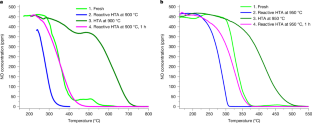2025-04-09 トロント大学
<関連情報>
- https://www.utoronto.ca/news/hot-wheels-researcher-pedals-through-mississauga-map-air-temperature-differences
- https://www.sciencedirect.com/science/article/pii/S221209552400333X
郊外スプロールにおける都市気温のマイクロスケール空間分布のモデル化 Modelling the microscale spatial distribution of urban air temperature in suburban sprawl
Scarlett B. Rakowska, Matthew D. Adams
Urban Climate Available online: 20 September 2024
DOI:https://doi.org/10.1016/j.uclim.2024.102136
Graphical abstract

Highlights
- Mississauga, Ontario is a unique region dominated by suburban sprawl.
- Mobile monitoring using a bicycle platform can model urban air temperature.
- Stopping periods during mobile monitoring does not provide any benefit.
- We created a high spatial resolution urban air temperature surface across the city.
- Integrating regression kriging improves predictive performance.
Abstract
Mobile monitoring for urban air temperature at a microscale in Mississauga, Ontario, Canada, a unique region dominated by suburban sprawl, was completed via cycling. We sampled seven pre-determined routes across Mississauga, resulting in 3144 min of air temperature measurements between July and August 2022. We developed land use regression models to determine if stopping for 5-min periods every 20 min was beneficial compared to continuous collection. The model generated from the data captured while moving demonstrated the best performance, explaining 80 % of the spatial variability of air temperature in Mississauga. Regression kriging addressed issues of spatial autocorrelation in linear models, improving predictive performance (CV R2 = 0.83, CV RMSE = 0.95 °C, CV MAE = 0.74 °C). We used the regression kriging model from the data captured while moving to predict average, maximum, and 95th percentile air temperature at a 20 m-by-20 m spatial resolution across Mississauga. We also conducted one-way analysis of variance (ANOVA) tests between air temperature and marginalization and found that areas with higher levels of marginalization experience different air temperatures compared to areas with lower levels of marginalization. Our study supports mobile monitoring to access urban air temperature and improve predictive performance by integrating regression kriging.



